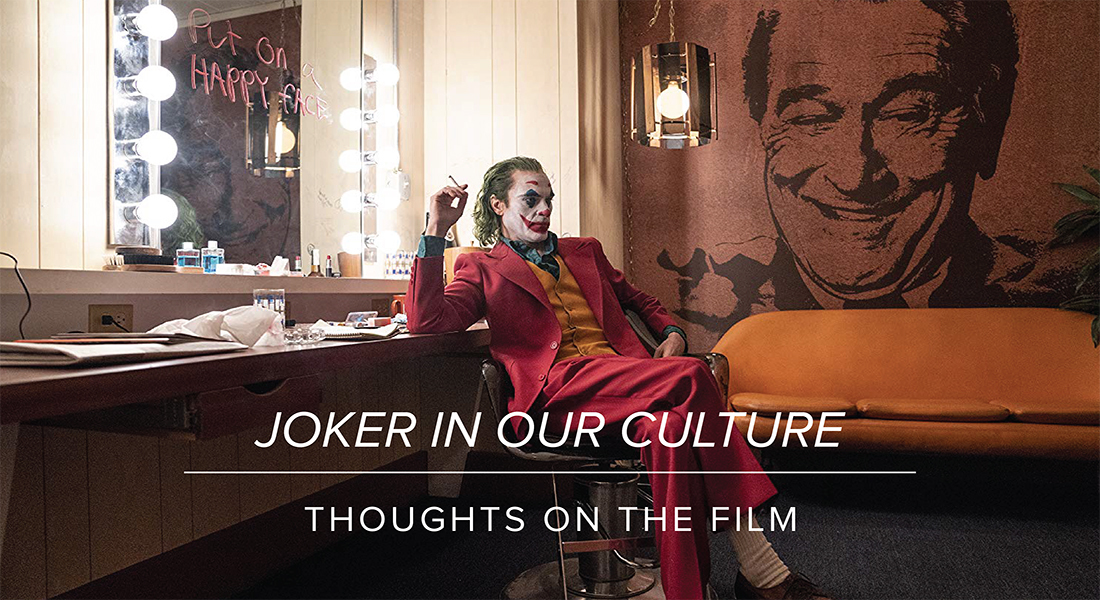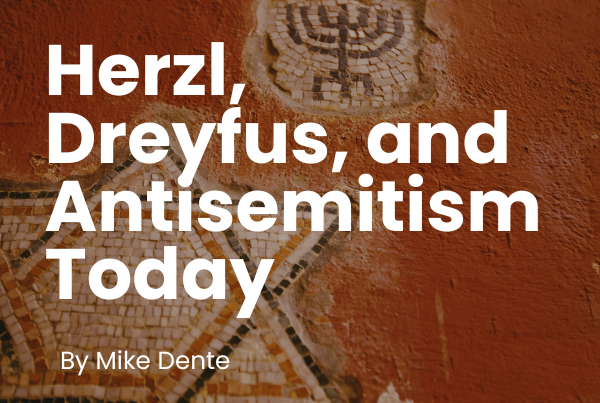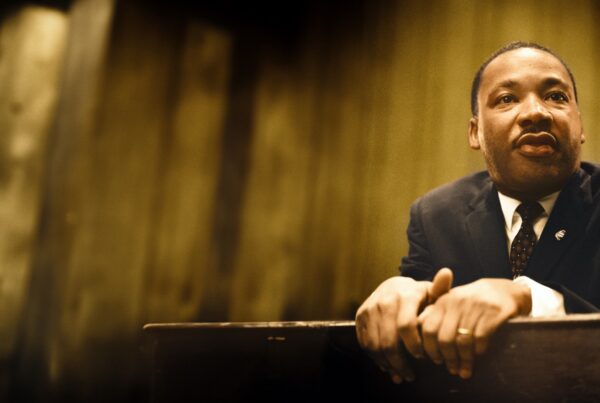
More than likely, you’re aware that Joker is in theaters. Maybe the film’s marketing reached you. Or more likely, you read about it in the news. My local theater had to close their release screenings1 of it, a story that was featured in national news. Other headlines describe nervous audiences,2 nervous theater owners,3 even warnings from the military.4 While some remain blissfully indifferent to the agita that has surrounded the release of this film, many are troubled by the culture, the portents and the moral weather patterns that come with Joker. As Christians, those portents and patterns in our culture are worth paying attention to.
Inspiring Violence
People fear that the film will encourage violence by glorifying violence. They fear the titular character will be inspirational to potential mass-shooters. In an age where mass shootings happen with increasing frequency, there are fears that a movie like this will empower such people to carry out their dark visions, committing twisted acts of “justice” against the evils of society or venting personal frustrations in an outburst of bullets. Concerns have been raised about the glorification of the character himself, whom the filmmakers are portraying in a much more sympathetic/relatable light than in previous interpretations. Joker is given a “real world” backstory, one that doesn’t involve toxic waste or superpowers. His creation is much more human, much more heartbreaking and, therefore, much more identifiable, especially to those more likely to commit acts of real-world violence.

Many found the very idea of such a film distasteful in light of the perceived connections5 to the Aurora Colorado mass shooting during a 2012 screening of The Dark Knight Rises. While that film didn’t actually feature the Joker character, negative links were drawn to his character from the series’ prior film, The Dark Knight, which had come out four years earlier.
Regardless of subjective connections to the Aurora shooting, the new Joker film from director Todd Philips has received its share of bad press, receiving the stigmas of “insensitivity” and “irresponsibility” from the media and the public alike. And this is my biggest issue with the tempest surrounding the movie.
Allow me to illustrate: The film is about a person confronted with increasingly difficult circumstances. As he attempts to cope, he also attempts to restrain himself; he has the tools to deal with bad situations, but he doesn’t want to go there. He must resist the temptation to give in to his “true self.” However, when bad people push him too far, he takes action. And that action reveals the justification he needs to abandon his inhibitions: a just cause. Even though people die, his actions are justified by the viewer because:
• He didn’t ask for any of this (innocence).
• The bad guys deserve what they have coming (guilt).
What ensues is a crusade of righteous indignation, as the “hero” rights the many wrongs that they (and especially the people they care about) have suffered. In the end, we applaud their vengeance because the hero did what we could never do: bring justice to an unjust situation and deliver some much-deserved retribution.
Now ask yourself this: What film or Netflix series did I just describe? Was that Tombstone or John Wick? The Equalizer or The Punisher? Perhaps a Tarantino? Or maybe the Taken series? Better yet, how many films can you think of that follow this formula?
Not a New Movie
This leads me to my first observation. This film isn’t new. What I mean is, it’s not an altogether new idea. It doesn’t cover new subject matter; it’s not a new plot; its essence isn’t new. Hollywood has been cranking out films very similar to this one for years. The context changes, the characters and their circumstances change, but the major plot arc is routine: Injustice occurs ↠ the protagonist is triggered to action ↠ moral lines are crossed ↠ retribution to evildoers ↠ the protagonist rests from his work. And far more than simply being prevalent, these sorts of movies are incredibly popular at the box office and among critics. So it shouldn’t be any surprise that direct similarities have been drawn between Joker and older films that seemed less worrisome, at the time, to the general public. Among those are works from renown director Martin Scorsese. What’s interesting to me is that his films have featured similarly disturbed characters, doing similarly disturbing things, but have been lauded by audiences, critics and the press for decades. Yet here we are, with a very similar film inciting fear and restlessness among modern audiences.
Another aspect that isn’t new about this movie is one of its key thematic ideas. It’s the concept of being yourself, being true to yourself, letting go of people’s expectations of you and becoming who you really are. But this idea is so commonplace. In a sense, the admonition is almost “Disney-esque:” “Believe in yourself; follow the desires of your heart, and all of your dreams will come true.” Scripture condemns this concept with a slap of reality: The human heart is desperately wicked and unknowable, and its depravity needs to be resisted. The syrupy advice from fairytales takes on a more insidious tone when you apply it to people whose heart’s desire is selfishness, who pay no heed to the harm they cause to others. The concept of surrendering to your desires is Edenic in origin: see and take. Don’t let anything hold you back from realizing your dreams, and you will find satisfaction. This has remained a prevalent and popular ethos in our culture from the very inception of humanity.
Not A New Character
Another observation about the climate surrounding the film: The Joker character isn’t new in the most literal sense. He’s been around for nearly 80 years. And for all of those years, he has embodied murderous chaos with a flair for theatrics and humor. His depravity has never been sugar-coated. From the beginning, he’s been portrayed as a remorseless, laughing, gloating serial killer/criminal mastermind nemesis for Batman. His methods and motives have been illustrated unflinchingly, from his first appearance in the Batman No. 1 comic, through Jack Nicholson’s portrayal in 1989, to Heath Ledger’s (posthumously) award-winning depiction of the character.6
Somehow though, our culture seems uneasy about embracing this newest depiction, in the form of Joaquin Phoenix’s troubled Arthur Fleck. But what makes me uneasy about the whole character is how joyfully our culture has embraced all of his previous incarnations. It seems much scarier to me, and much more telling about our culturally-endemic desensitization, that people laugh and clap approvingly at a Joker who can “humorously” murder people with pencils or spray people with acid from his prank lapel flower or dance and joke over the bodies of people he’s just poisoned. Shouldn’t the taking of life feel sorrowful? Shouldn’t it feel wrong? Why aren’t we relieved when, in a sea of movies that casually devalue human life, this film conveys that killing is wrong and that the taking of lives is a violation, or at the very least, negatively impactful?
We Don’t Like the Context
In part, the distaste comes from the portrayal of the people who die. In the case of those murdered by the Joker in 1989’s Batman, the people seem so ridiculous and fake that it’s hard to feel any emotional pull when they meet their demise. They’re almost like cardboard cutouts who simply get pushed over: We don’t know them or care for them. Sure, there are the bad gangsters who die and, in a sense, get what they deserve. But for the people in the art museum, or in the streets of Gotham, their deaths are handled so humorously, numerously and callously, that we can hardly connect or identify with them. However, the on-screen deaths committed by this new Joker feel intimate, visceral and heavy.
Another aspect could be that, in the new film, the “bad guys” who die aren’t people we necessarily believe to be bad. There are even some we think aren’t bad at all; their only perceived guilt comes from simply being part of an unjust system, or “guilt by association.” Unlike the scores of Nazis that are brutally, sadistically dealt with in one popular film, we don’t necessarily identify the victims in this film as evil. But those who are less affluent, with less hope or less opportunity in life might. Hence, the public support of the killings from the general population within the film. They view Joker as a symbol: one man standing up against the system of oppression. The people who are killed in Joker are all either liars, cruel antagonizes or people benefiting from perceived corruption. In some way, and from a particular perspective, they’re all part of a system of hurt and abuse.
The problem though is that we don’t like how subjective their guilt is. Nevertheless, isn’t that the point-counterpoint between secular humanism and Christianity? The secular humanist would argue that right and wrong are subjective to the individual, while Christianity would hold to the objectivity of God’s Word.

To that point, there is a pivotal scene in the film when Arthur Fleck asks the question: “What do you get when you cross a mentally ill loner with a society that abandons him and treats him like trash? Exactly what you deserve!” From his unhinged, subjective perspective, he’s doing what is right, giving out what he thinks is deserved. In a sense, the unease that comes from seeing his insanity and the perceived rightness of his crimes should find relief in the concept of a just God whom humanity is accountable to. Instead, the film depicts a subjectivity to the concepts of guilt and sin. Granted that it’s told from the perspective of an unhealthy mind, but it’s nonetheless the subjectivity of this framework that should make us very uneasy.
Sadness and Compassion
This aspect is new to the Joker story, at least to the film versions. This is a sad, sad film. The story begins within a financially depressed economy, where the circles of work and homelife are permeated with the stench of crime, shame and inescapable poverty. Building on this is the weighty responsibility of caring for an ailing, elderly mother. Add to that the aforementioned mental illness countered only by prescription drugs and weekly, state-afforded counseling sessions. Finally, add a neurological condition that makes you burst into uncontrollable laughter when stressful situations arise. But this particular facet is handled humorlessly. The emphasis is on the social awkwardness that such a condition would create. Imagine how quickly any argument would escalate if, after listening to a person’s issue, you burst out laughing. This is Arthur Fleck’s reality. The result is misunderstanding and isolation, compounded by the weight of all the other difficulties that surround him. This establishing tale of the Joker character doesn’t involve an accident with toxic waste creating a criminal mastermind, arch-villain and crime boss. This film is told from the perspective of desperation, depression and hopelessness. This is someone with no means, no friends, no hope, trudging through life under the weight of very identifiable sorrow.
Making the film more complex, the handling of sin is theologically interesting. As my Professor, Gerry Breshears, recently remarked in class, psychology usually only deals with the sins committed TO a person, and pastors usually only deal with sins committed BY a person. But this story deals with both. The protagonist is laden with difficulty from outside: systemic poverty and the burdens of trying to “put on a happy face” for a loved one, all within a world that views him as worthless. He’s also burdened with difficulty from within: the portrayal of mental un-health is intimate, personal, sorrowful and disturbing. Between these paradigms, we sadly observe the abuse, deception, lying and disappointment that he endures at the hands of others.
But we also see the evils that he commits as just that: evil. In a fashion reminiscent of Sophocles, Shakespeare and Vince Gilligan, each evil action he takes is just as destructive to himself as to those around him. His environment doesn’t vindicate his monstrous actions; nothing does. And his actions are never justified by the outcomes; they simply add momentum to his downward spiral. While you feel compassion for him, you’re never led to thinking that he’s “right,” or that his actions are acceptable, let alone funny.
Controversially Thought Provoking
And this raises another interesting aspect about the film: It doesn’t cram a message down your throat. Maybe we wish it would have. Maybe the press would be less nervous in their reporting if this were a morality tale, teaching that evil actions come from an evil environment. Or that embracing evil leads to an evil end. Instead, the film leaves the viewer with the abstract, existential question of evil itself. What is it? Where does it come from? How do you deal with it without becoming it? How do you prevent it? These questions form great conversational springboards for the Christian. Everyone recognizes evil in the world. Engaging in conversations about ultimate evil and its ultimate answer in the form of The Ultimate Love of God is like a slow pitch for anyone looking to share the truth and comfort of the Gospel.
What’s really interesting is that the film doesn’t “say” much at all as far as conclusion or application. It’s more revelatory than didactic. It’s left to the viewer to understand and interpret the tale. And perhaps therein lies the problem. Maybe it’s the ambiguity of evil that has caused so much tension, anxiety and fear. The secular humanist has no explanation of evil, let alone advice on what to do with it. The Bible does, but that’s the one place that “rational secularists” aren’t allowed to go for answers. However, when a film or event reveals gaps in the collective reasoning of our secular world, we as Christians need to be ready to address the unease, to use God’s Word to explain it and to cast light on the darkness.
Notes:
1 Cameron, Dell. “U.S. Military Issues Warning to Troops About Incel Violence at Joker Screenings.” September 24, 2019. (accessed October 06, 2019).
2 Daniel, Anslee. Bristol, “TN Drive-In Bans Costumes for Showing of ‘Joker.'” October 5, 2019. (accessed October 6, 2019).
3 Desta, Yohana. “The ‘Joker’ Didn’t Inspire the Aurora Shooter, but the Rumor Won’t Go Away.” October 02, 2019. (accessed October 08, 2019).
4 Fry, Hannah. “Credible Threat Targeting ‘Joker’ Screening Forces Huntington Beach Theater to Close.” October 4, 2019. (accessed October 4, 2019).
5 Reeves, Jay. “Security, NY Incident Leave Some Unsettled After ‘Joker’.” October 5, 2019. (accessed October 6, 2019).
6 Ledger’s portrayal garnered him 32 award nominations, leading to a staggering 28 wins, including an Academy Award for “Best Supporting Actor,” a Golden Globe for “Best Actor in a Supporting Role,” and a SAG award for “Outstanding Performance by a Male Actor in a Supporting Role in a Motion Picture.”
CalvaryChapel.com does not necessarily endorse or agree with every message or perspective in the diverse film reviews posted. By providing these film reviews, we hope to help you stay informed of important events and conversations taking place in the world that are relevant to the Christian faith.
Joker is rated R for strong bloody violence, disturbing behavior, language and brief sexual images.









